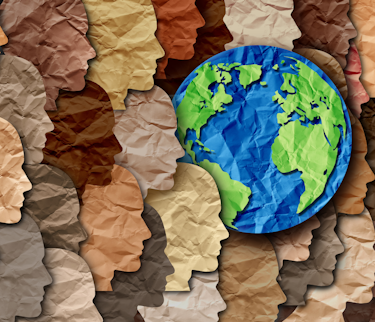Awareness French Conference on Franco-Ténois Culture through Images and Stories
An introduction to Franco-Ténois culture and life in a northern minority context.
Free
Our cookies and those of our partners help improve your experience and analyze your use of the website. To learn all about cookies, check our privacy policy

In organizations as in everyday life, the words equity, diversity and inclusion (EDI) now appear in strategic plans, internal policies, community spaces and workplaces. Yet their true meaning is often misunderstood or reduced to an administrative requirement.
Far from being a trend or an external obligation, EDI provides a framework for reflection and action that helps transform our environments into spaces where all people can contribute, grow, and feel recognized. It is rooted both in social justice and in organizational coherence.
Diversity refers to the full range of human differences, whether visible or invisible. It includes identities, life paths, experiences, ways of functioning, and the realities people live every day.
It encompasses, for example:
Diversity exists everywhere. What changes from one environment to another is the way it is recognized, valued, or ignored.
Equity acknowledges that not everyone starts from the same place and that some groups face systemic barriers limiting their access to the same opportunities.
It therefore consists of providing the necessary resources or accommodations for each person to participate fully, rather than applying identical treatment that reproduces existing inequalities.
Examples of equitable approaches:
Equality gives the same thing to everyone. Equity gives each person what they actually need.
Inclusion is the act of ensuring that every person is welcomed, acknowledged, and valued in a space. It’s not just about “letting people in,” but about transforming environments, practices and norms so that they are truly accessible and safe, regardless of identity or need.
An inclusive environment is one where:
It’s the shift from “everyone is allowed” to “everyone belongs and has power.”
EDI affects how we:
It’s not just a concern for managers or HR teams. It shows up in everyday actions — an email, a meeting, a poster, an interaction, a process.
In 2022, 27% of Canadians aged 15 and over reported living with at least one disability, visible or invisible — that’s about 8 million people. More than 36.9% said they had experienced discrimination based on origin, age, appearance, religion, or gender.
These figures remind us that EDI is not optional or marginal. It directly affects social participation, employment, mental health, and quality of life.
In the Northwest Territories, EDI cannot be approached without acknowledging:
In the Northern context, EDI is also a process of repair, recognition, and solidarity.
To support individuals and organizations in this process, Collège Nordique offers a free introductory course on EDI, structured in progressive modules.
This training allows participants to:
The course is open to everyone — whether employed, studying, in professional transition, or active in the community.
Loading
Thank you for subscribing